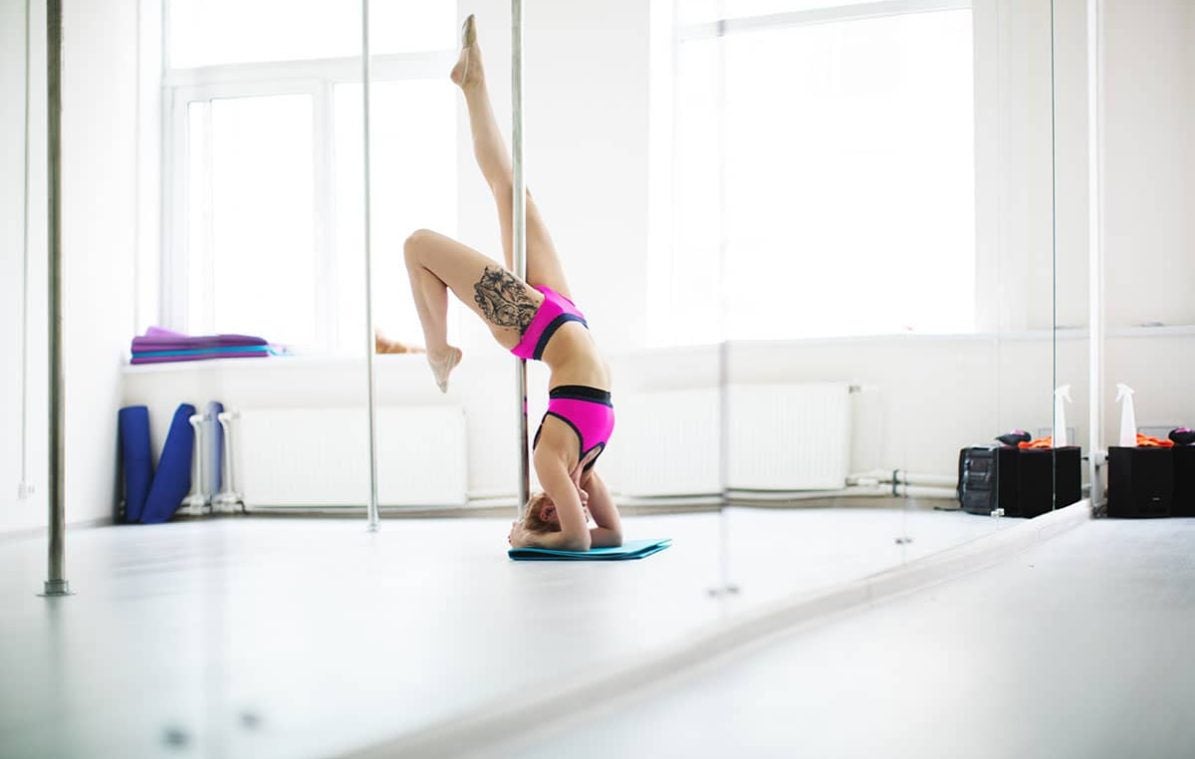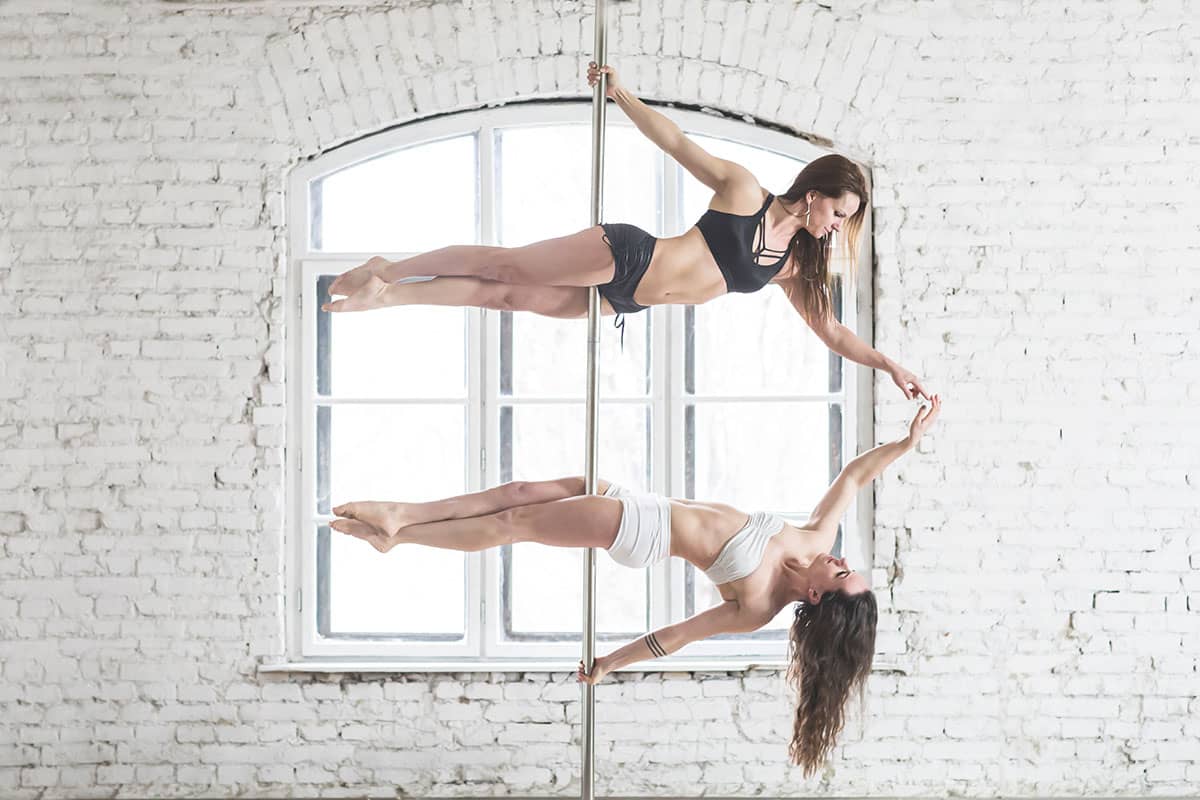Pole Dance: What Are Its Benefits as a Sport?
 ⒸMelinda Mile
ⒸMelinda Mile
From nightlife and strip clubs to gym rooms and home workouts. Where there was alcohol and cigarette smoke, there are now energy bars and isotonic drinks. In recent years, pole dancing has become one of the biggest trends in sports activities. So much so that it is starting to be known also as pole fitness or pole sport, and has international competitions organized by the International Pole Sport Federation (IPSF). It is also in the process of being recognized as an Olympic sport. So what is it that has made this physical activity one of the trendiest sports? For starters, the undeniable attraction of combining dance and acrobatics on a fixed vertical bar where concentration, coordination and strength are the protagonists. It’s also excellent for burning calories and toning muscles, especially arms and legs, as well as improving our flexibility. And this sexy exercise has even more benefits.
Medium Intensity Physical Exertion
There is still much information to be studied and learned about pole dance, but as its popularity grows, so does the interest of the scientific community. For example, in 2019, the Journal of Strength and Conditioning Research published the first study on pole dance physiology. The researchers gathered 14 advanced-level practitioners and a measurement was made of the energy expenditure generated by a pole dance class.
The result was 280 calories in a one-hour class, including warm-up, training and stretching after the physical activity. Heart rate and other physiological parameters were also measured and a conclusion was reached: a pole dance class can be considered as a medium-intensity physical effort. Taking into account the recommendations of the World Health Organization to do “at least 150 minutes of aerobic physical activity of moderate or vigorous intensity per week”, it seems that practicing a sport like pole dancing at least three times a week helps to protect us against the development of chronic diseases such as high blood pressure and cholesterol, and heart disease.
Increased Strength and Postural Stability
Do you feel that you struggle to lift certain weights in your daily life and think you need to get stronger? Then pole dancing may also be a good idea. A study published in The Journal of Sports Medicine and Physical Fitness analyzed 52 women who practiced this sport and concluded that “regular pole dancing may contribute to a significant increase in strength and improved postural stability, which is important for the entire musculoskeletal system.”
However, this same study also points out the need for further studies on the “negative impact of pole dance exercises on the musculoskeletal system”. Because we cannot fail to address the main less positive aspect of regular pole dance fitness practice: injuries.

Your First Class
You’ve finally made up your mind and you’re going to take your first pole dance class. What do you need? Well, above all, the desire to have a good time and leave embarrassment aside. But, there are also some important things to keep in mind. Be sure to go with dry skin! Don’t use creams or lotions because they will make you slip and as for clothing, the less the better! You have to expose your skin to have physical contact with the bar when performing the movements. Shorts, a sports bra and your hair pulled back to prevent it from getting tangled and bothering you. Want to add an extra touch to your training? Stiletto heels will help you not only to feel more sensual but also to hold on to the bar as you climb.
Your weight, fitness level and age are not a limitation when it comes to pole dancing. It is an activity based on facing our limitations and learning to overcome them. In addition, pole dance classes are usually held in fairly small groups and this allows the teacher to be very attentive and help you adjust the level. The last taboo overcome? That men don’t train with pole dance. In fact, in most cases, they may find it easier to execute some movements, such as those involving the use of arm or shoulder strength. On the other hand, they may suffer more than women when it comes to using certain leg grips or when flexibility comes to the fore.
Injuries in pole dancing and how to avoid them
Let’s start with the scientific evidence. In 2019, The Journal of Sports Medicine and Physical Fitness, published a global survey which revealed that 54.5% of the most common pole dance injuries were to the shoulders, then followed by the wrists and back with 34.2% and 24.7% respectively. Just a year later, also the The Journal of Sports Medicine and Physical Fitness published another study warning pole dancers about “the relationship between pole dance training and increased risk of injury”.
This information may seem discouraging when faced with the idea of pole dancing, but what can we do? The same study just referred to also indicates that “the most important factors that can protect against acute pole dance injuries are a well-performed warm-up and a balanced diet”.
In terms of avoiding injury or aggravating existing injuries, we must stress the importance of recovering fully from an injury before returning to the pole to exercise. In fact a study published in the journal Nature in 2022, revealed that those people who pole danced and returned to training without fully recovering from a previous injury were at increased risk of re-injury.
So, when we get injured, the wisest thing to do is to go to a professional to evaluate the problem and inform us about the recovery we need to get back to one hundred percent and avoid future injuries, or the aggravation of those we have already suffered.
Learn more about this topic at foodspring:
- 7 Essential Cardio Workouts That Can Add Years to Your Life
- 4 Surprising Reasons Why You Should Workout Barefoot
Sources for this article
We at foodspring use only high-quality sources, including peer-reviewed studies, to support the facts within our articles. Read our editorial policy to learn more about how we fact-check and keep our content accurate, reliable, and trustworthy.
































